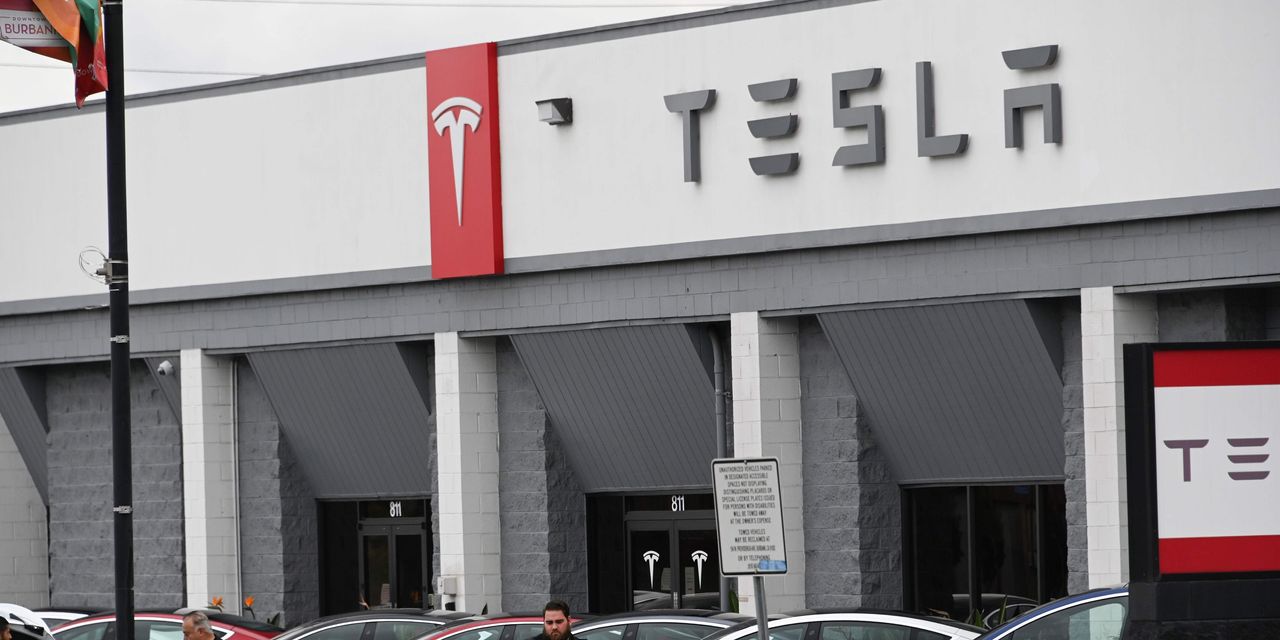
With help from China, Tesla has turned itself into an unusually profitable car maker. Whether that makes it a tech company worthy of a near-trillion-dollar valuation is less clear.
As it has scaled up production in its Shanghai factory over the past two years, the electric-vehicle pioneer has accumulated enough profit to make up for all the losses in its previous history. Late Wednesday it reported a 14.7% operating margin for the fourth quarter in an industry where single-digit margins are considered normal.
That margin was a record for Tesla, but it wasn’t quite as high as analysts had hoped. The company’s strong fourth-quarter sales may have lifted hopes that it could easily beat the 14.6% number reported for the third quarter. Instead, the scale benefits were eaten up by rising commodity and transportation costs as well as $340 million in payroll expenses related to Elon Musk’s stock awards. The stock didn’t move much in after-hours trading.
The expense of batteries makes EVs less profitable than traditional cars for other auto makers. Among the explanations for Tesla’s surprising profitability might be a direct sales model—unlike other car makers, it doesn’t hand any margin to dealers—and the sheer scale of the two factories it now has up and running. Both its Fremont, Calif. and Shanghai plants produced roughly 470,000 vehicles last year, making them among the largest in the world.
This lesson will be important to remember as Tesla scales up factories in Austin, Texas and Berlin this year and next. The company itself has said the process of “ramping” production in its two new plants will weigh on margins. This may be particularly true compared with its experience in China: Beijing appeared to have rolled out a red carpet for Tesla. China also has a cheaper battery supply chain than Europe or North America.
The major risk to Tesla’s execution in the coming years is pressures in the supply chain, not just for semiconductors but also batteries. It might continue to outshine traditional auto makers in the marketplace consumers see, but it also needs to compete with them for raw materials. As just about every traditional car maker starts to scale up EV output, that will become increasingly challenging. Prices for battery metals such as nickel and lithium are flashing warning signals.
The other risk concerns valuation: Tesla trades for almost 12 times forward revenues, which is hardly like an industrial stock. It stands to reason that even the exemplary execution of an industrial growth strategy won’t be enough.
On a call to discuss the results Wednesday, Chief Executive Elon Musk repeatedly stressed the importance of self-driving software to Tesla’s long-term prospects. “Everything pales in comparison to the value of robotaxis,” he said.
But any competitive edge Tesla might have here is much less clear than its leadership in electric vehicles and the battery technology that drives them. Driverless cars have consistently proven harder to deliver than Mr. Musk has anticipated and, by relying mainly on cameras as sensors, he is taking a riskier approach to the problem than the rest of the industry.
Although Tesla is turning out very impressive results for a car maker, its stock price depends on its becoming something else. For all the achievements of the past year, Mr. Musk still has much to prove.
Write to Stephen Wilmot at [email protected]
Copyright ©2022 Dow Jones & Company, Inc. All Rights Reserved. 87990cbe856818d5eddac44c7b1cdeb8








